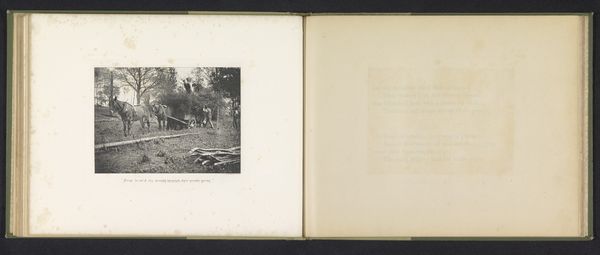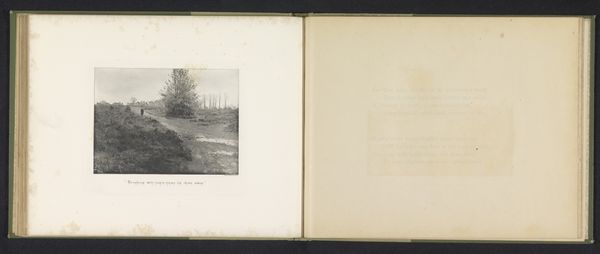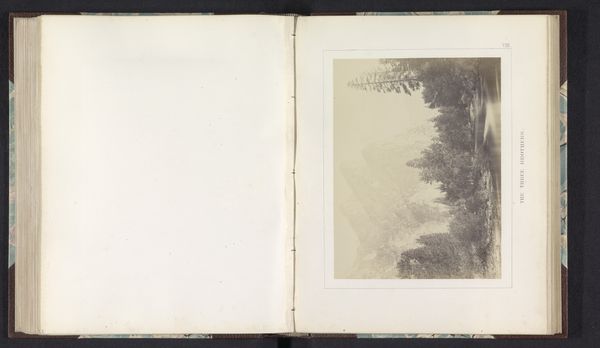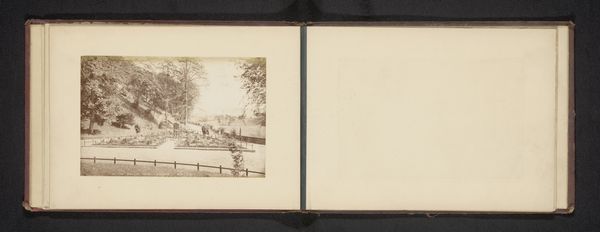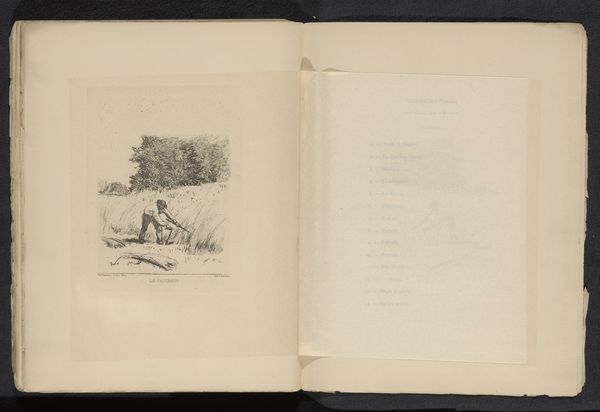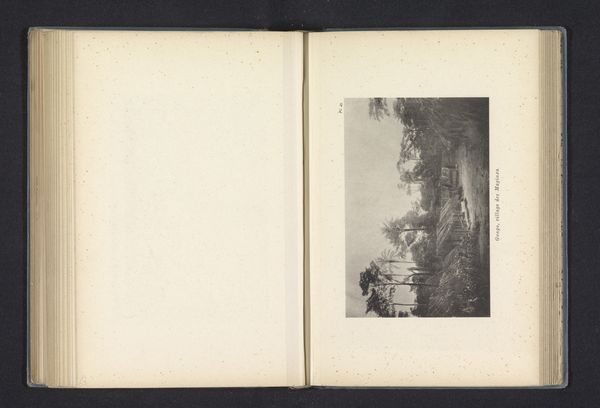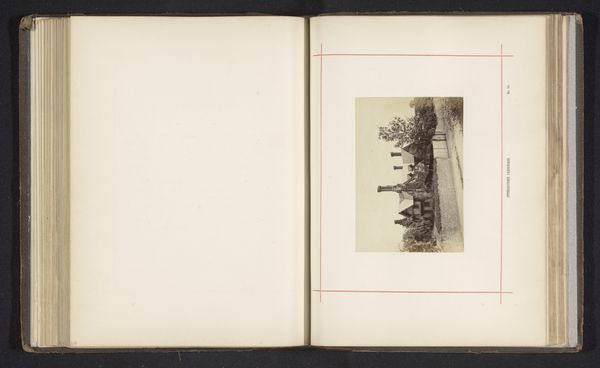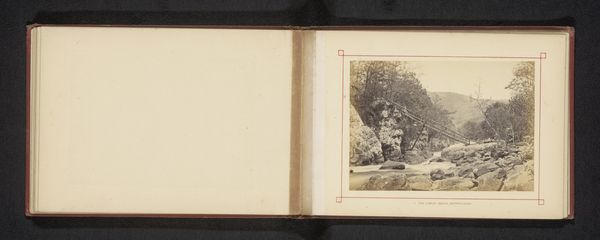
drawing, print, etching, photography, pencil
#
script typeface
#
drawing
#
aged paper
#
script typography
# print
#
etching
#
hand drawn type
#
landscape
#
photography
#
personal sketchbook
#
hand-drawn typeface
#
fading type
#
pencil
#
stylized text
#
thick font
#
handwritten font
#
academic-art
Dimensions: height 149 mm, width 116 mm
Copyright: Rijks Museum: Open Domain
Curator: I find this artwork so charming. It's entitled "Gezicht op een wei met koeien in New England," which translates to "View of a Meadow with Cows in New England." It dates from before 1890 and appears to combine etching, drawing and photography. Editor: Yes, there's something inherently peaceful and bucolic in the image, despite its monochromatic palette and mixed media feel. The textures certainly catch my eye, the layering of the image creating some form of collage work. It draws attention to the physical crafting of the book form. Curator: I'm particularly interested in how the landscape of New England became this constructed idea in the late 19th century. Prints like these played a role in shaping perceptions of rural life, sentimentalizing agricultural scenes while obscuring the realities of farm labor and economic changes. It speaks to a burgeoning tourist industry as well as an increased public awareness and interest in idyllic settings like that. Editor: Absolutely, we're not just looking at cows; we're looking at constructed iconography. What labor went into producing those dairy products being presented here, that romantic version of handiwork which the book attempts to conjure, and for what markets were those pastoral dreams fashioned into a desirable book form. There's an entire system of value-creation embedded here, between high-end crafting and mass-produced printed work. Curator: The text included on the other leaf adds a sentimental, even melancholic dimension, suggesting themes of nostalgia and memory related to time away and time moving quickly through idyllic landscapes. The inclusion of text in what you are calling "hand-drawn type" connects it directly to academic artistic and poetic traditions in the U.S., as well, perhaps influencing trends and tropes throughout society. Editor: Agreed, it becomes less about a straightforward depiction of a field and more a fabricated representation geared for sale and popular distribution as "good" imagery. It points us towards the commodification of leisure and the constructedness of landscapes themselves, literally built from human material input that is always present but often masked or erased from fine art considerations. Curator: Seeing this has expanded my view of what shaped popular visions of the rural, opening doors to consider the era's cultural imagination. Editor: For me, it underlines the value of always questioning what has been left out of the frame or erased from view to manufacture consumer desire, helping us more deeply appreciate our surroundings.
Comments
No comments
Be the first to comment and join the conversation on the ultimate creative platform.

